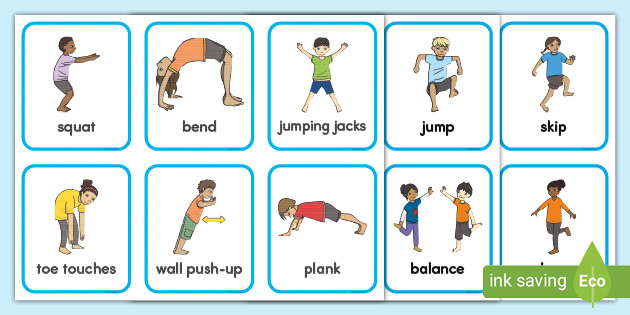The Importance of Brain Breaks: Boosting Productivity and Focus
In the modern, fast-paced society we live in, not taking enough brain break during work or study can result in mental exhaustion, lower productivity, and higher levels of stress. To maintain cognitive function, creativity, and overall well-being, educators, employers, and individuals are incorporating “brain breaks” into their routines.
Brain breaks are short, intentional pauses in activities that promote relaxation and rejuvenation, allowing individuals to step away from their tasks and engage in activities that promote relaxation and rejuvenation. Prolonged periods of continuous work can diminish returns, making the brain less effective in processing information.
What are brain breaks?
Brain breaks are short periods when you step away from your work and engage in a different activity. This can include physical activities like stretching or going for a walk, or mental activities like meditation or playing a game. The key is to give your brain a break from the task at hand and allow it to recharge.
Types of brain break
Brain breaks come in various forms, and the key is to engage in activities that provide relaxation, stimulate different areas of the brain, and promote overall well-being. Here are some types of brain breaks:
- Physical Activity Breaks:
- Stretching Exercises: Encourage simple stretches to alleviate physical tension and improve circulation.
- Quick Workouts: Incorporate short bursts of physical activity, such as jumping jacks, squats, or a brisk walk.
- Mindfulness and Relaxation Breaks:
- Deep Breathing: Practice controlled breathing exercises to reduce stress and promote relaxation.
- Meditation: Engage in brief meditation sessions to calm the mind and enhance focus.
- Visualization: Encourage individuals to visualize a calming scene or positive outcome.
- Social Breaks:
- Chatting Breaks: Allow time for casual conversations with colleagues or peers.
- Group Activities: Organize short team-building activities or games to foster social connections.
- Cognitive Breaks:
- Puzzles and Brain Games: Provide activities like crossword puzzles, sudoku, or brainteasers to stimulate cognitive function.
- Coloring or Doodling: Engage in creative activities that promote relaxation and mental refreshment.
- Nature Breaks:
- Outdoor Walks: Encourage short walks outside to benefit from fresh air and natural surroundings.
- Nature Observation: Take a moment to observe and appreciate nature, whether through a window or in an outdoor setting.
- Music and Arts Breaks:
- Listening to Music: Allow individuals to listen to calming or energizing music to alter moods and boost creativity.
- Drawing or Painting: Provide art supplies for a quick artistic expression break.
- Tech-Free Breaks:
- Digital Detox: Encourage a brief break from screens and electronic devices to reduce eye strain and mental fatigue.
- Silent Breaks: Create moments of silence to help individuals unplug and reset their minds.
- Playful Breaks:
- Games: Incorporate short, light-hearted games or activities that bring joy and playfulness to the environment.
- Humor Breaks: Share a funny video, joke, or comic to lighten the mood.
- Educational Breaks:
- Learning Snippets: Introduce short educational videos or interesting facts to engage the mind differently.
- Language Learning Apps: Use brief language-learning exercises to stimulate cognitive function.
- Breathing and Relaxation Techniques:
- Box Breathing: Inhale, hold, exhale, and pause in equal counts to promote relaxation.
- Progressive Muscle Relaxation: Tense and relax different muscle groups to release physical tension.
The Science Behind Brain Breaks:
The brain operates through a dynamic interplay of various cognitive processes, and continuous engagement in a single task can lead to cognitive fatigue. Brain breaks leverage the principles of cognitive psychology, neuroscience, and physiology to optimize mental functioning.

- Attention Restoration Theory (ART): Developed by psychologists Rachel and Stephen Kaplan, ART suggests that exposure to nature or engaging in activities that provide a sense of fascination and interest can restore mental fatigue and enhance cognitive performance.
- Circadian Rhythms: The body’s natural circadian rhythms influence energy levels and alertness throughout the day. The strategic timing of breaks aligns with these rhythms, maximizing the effectiveness of rest periods.
- Neuroplasticity: The brain’s ability to reorganize itself and form new neural connections is known as neuroplasticity. Breaks support neuroplasticity by allowing the brain time to consolidate information and adapt to new experiences.
Why Brain Breaks Are a Must for Every Student’s Day
Boosting Productivity
One of the major benefits of brain breaks is that they can boost productivity. When we work for extended periods without a break, our brains can become fatigued, and our focus and productivity can suffer. By taking a short break, we allow our brains to rest and recharge, making us more alert and focused when we return to our work. This can lead to increased productivity and better-quality work.
Improving Focus
In addition to boosting productivity, brain breaks can also improve focus. When we are constantly working on the same task, our brains can become overstimulated, and we may start to lose focus. By taking a break and engaging in a different activity, we give our brains a chance to reset and refocus. This can be especially helpful for tasks that require a lot of concentration, as it allows us to come back to the task with a fresh perspective and renewed focus.
Incorporating brain breaks into your routine
It’s important to incorporate brain breaks into your daily routine to reap the benefits. This can be as simple as taking a 5–10 minute break every hour or so or scheduling longer breaks throughout the day. It’s also important to find activities that work for you. Some people may prefer physical activities like going for a walk or doing yoga, while others may find mental activities like meditation or playing a game more beneficial. Experiment with different activities to find out what works best for you.
Brain Break Clipart
If you’re looking for a fun and creative way to incorporate brain breaks into your routine, consider using a brain break clipart. These images can be used to create visual reminders to take a break or to add some fun to your breaks. You can find a variety of brain-break clipart online, including images of different activities and motivational quotes.

Brain breaks for kids
Brain breaks are not only beneficial for adults but also for kids. Incorporating brain breaks into a child’s daily routine can help improve their focus and productivity. Here are some brain breaks specifically designed for kids:

- Simon Says: Play a game of Simon Says with your child. This game involves following various actions and commands, such as touching their nose, clapping their hands, or jumping in place. It encourages listening skills and physical movement.
- Dance Party: Put on some music and have a dance party with your child. Dancing not only gets their bodies moving but also helps release energy and improve their mood.
- Animal Yoga: Introduce your child to animal yoga poses. Encourage them to imitate different animal movements and stretches. This activity promotes flexibility, balance, and mindfulness.
- Freeze Dance: Play some upbeat music and tell your child to dance. Randomly stop the music and have them freeze in their current position. This game enhances listening skills and quick thinking.
- Nature Walk: Take your child on a short nature walk. Encourage them to observe and discuss the things they see, such as flowers, trees, or animals. Being in nature helps reduce stress and promotes cognitive development.
- Storytelling: Take turns telling a story with your child. Each person adds a few sentences to the story, and it continues to build. This activity stimulates imagination and creativity.
Remember, brain breaks for kids should be fun and engaging. It’s essential to tailor the activities to your child’s interests and abilities. By incorporating brain breaks into their routine, you can help improve their focus, productivity, and overall well-being.
READ THIS-The Benefits of Listening: How to Improve Your Listening Skills
Quick and Easy Brain Break Ideas for Adults
- Deep Breathing Break:
- Inhale deeply for a count of four.
- Hold your breath for four counts.
- Exhale slowly for four counts.
- Repeat several times.
- Desk Stretching Break:
- Neck stretches: Slowly tilt your head from side to side.
- Shoulder rolls: Roll your shoulders forward and backward.
- Seated twists: Gently twist your torso while sitting in your chair.
- 10-Minute Walk:
- Take a brisk walk around the office or outside for a quick energy boost.
- Power Nap Break:
- Find a quiet space and take a short, 10- to 15-minute power nap for a quick refreshment.
- Energizing Snack Break:
- Have a healthy snack, like a piece of fruit or a handful of nuts, to boost energy levels.
- Desk Doodling Break:
- Take a few minutes to doodle or sketch on a notepad for a creative break.
- Quick Mindfulness Break:
- Close your eyes and focus on your breath for one minute to bring awareness to the present moment.
- Laugh Break:
- Watch a funny video or read a quick joke online for a dose of humor.
- Desk Yoga Break:
- Perform a few seated yoga stretches or poses at your desk.
- Tech-Free Break:
- Step away from screens and take a few minutes to relax your eyes and mind.
- Water Break:
- Stay hydrated by taking a short break to drink a glass of water.
- Memory Game Break:
- Play a quick memory game or challenge yourself with a puzzle for mental stimulation.
- Expressive Writing Break:
- Spend a few minutes jotting down thoughts or feelings to clear your mind.
- Coloring Break:
- Keep a coloring book and colored pencils handy for a quick coloring session.
- Quick Meditation Break:
- Practice a brief meditation by focusing on your breath and clearing your mind.
- Listening Break:
- Listen to a calming or upbeat music track for a mood boost.
- Sunshine Break:
- Step outside for a few minutes to soak up some sunlight.
- Gratitude Break:
- Take a moment to reflect on and jot down a few things you’re grateful for.
- Desk Drumming Break:
- Tap out a quick rhythm on your desk or play with a small hand drum for a fun break.
- Positive Affirmation Break:
- Repeat positive affirmations to boost your mood and confidence.
Conclusion
In conclusion, taking regular brain breaks throughout the day can have a positive impact on productivity and focus. By giving our brains a chance to rest and recharge, we can improve our overall performance and well-being. So next time you find yourself feeling overwhelmed or struggling to focus, remember the importance of brain breaks and take a few minutes to give your brain a break.



